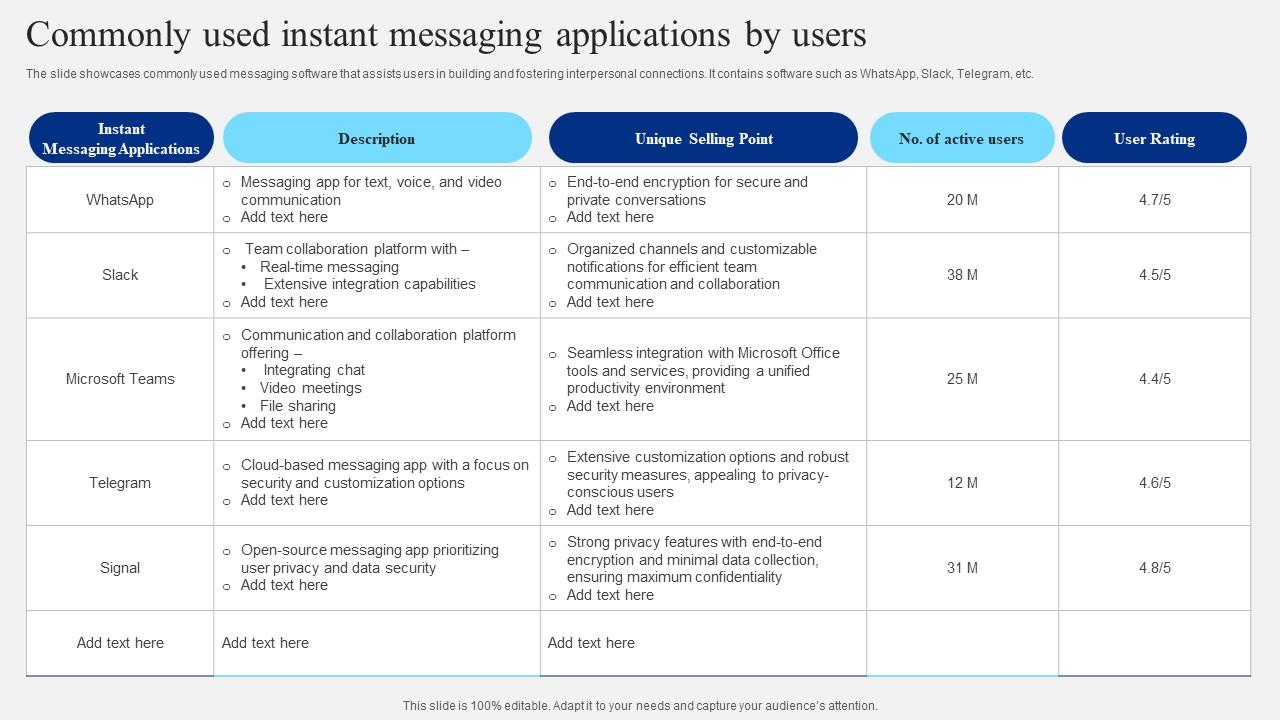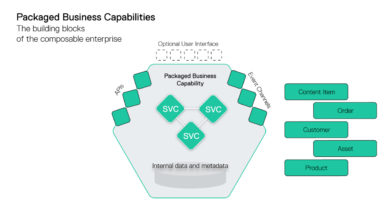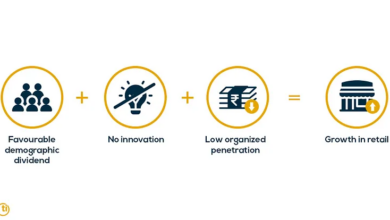
Real-Time Software Tooling for Stateful Apps
Real time software tooling to communicate stateful applications – Real-time software tooling to communicate stateful applications is a hot topic! Imagine building an online game where every player’s move is instantly reflected for everyone else, or a stock trading platform where prices update with lightning speed. This isn’t magic; it’s the power of real-time communication applied to applications that need to remember and track their current state.
We’ll dive into the challenges of managing this state across multiple systems, explore the different tools available to achieve this real-time magic, and discuss the critical aspects of designing robust, scalable, and secure architectures.
We’ll cover everything from choosing the right message queue or streaming platform to designing effective state synchronization mechanisms and implementing robust error handling. Think of this as your ultimate guide to building the next generation of responsive and interactive applications. Get ready to unlock the potential of real-time communication in your own stateful applications!
Defining Stateful Applications and Real-Time Requirements

Stateful applications are a cornerstone of modern software, handling complex interactions and persistent data. Understanding their characteristics and the challenges they present, especially in real-time scenarios, is crucial for building robust and efficient systems. This post delves into the specifics of stateful applications and the unique demands of real-time processing.
Stateful Application Characteristics
Stateful applications maintain and utilize data about past interactions to inform current and future behavior. This contrasts with stateless applications, where each request is treated independently. Key characteristics include persistent data storage (databases, caches, etc.), contextual awareness based on previous interactions, and the ability to manage complex workflows spanning multiple requests. The presence of state adds complexity but also enables richer functionality and personalized user experiences.
Challenges in Managing State in Distributed Systems
Managing state in distributed systems presents significant hurdles. Data consistency across multiple nodes becomes paramount. Techniques like consensus algorithms and distributed transactions are often employed to ensure data integrity. Another significant challenge is scalability; as the number of nodes increases, managing state efficiently becomes exponentially more difficult. Furthermore, fault tolerance is crucial, requiring mechanisms to handle node failures and data replication to prevent data loss.
Efficient state management directly impacts performance and system availability.
Implications of Real-Time Constraints on Application Design
Real-time constraints demand low-latency processing and predictable response times. This significantly impacts application design. Design choices must prioritize speed and efficiency. Careful consideration must be given to data structures, algorithms, and communication protocols. Asynchronous processing and optimized data access methods are often essential.
The trade-off between functionality and performance must be carefully managed to meet the stringent timing requirements. Ignoring real-time constraints can lead to system instability, missed deadlines, and ultimately, failure.
Examples of Stateful Applications Requiring Real-Time Tooling
Real-time tooling is essential for monitoring, debugging, and managing the state of complex, stateful applications. Tools allow developers to gain insights into system behavior, identify bottlenecks, and resolve issues rapidly. Here are some examples:
| Application Type | State Data | Real-time Requirement | Tooling Example |
|---|---|---|---|
| Online Gaming Platform | Player positions, game state, inventory, chat messages | Sub-millisecond latency for game updates, near-instantaneous communication | A distributed tracing system coupled with a real-time monitoring dashboard showing key performance indicators (KPIs) like latency and throughput. |
| Financial Trading System | Order book, account balances, market data | Microsecond-level latency for order execution, accurate and consistent data across all nodes | A high-frequency data streaming platform with low-latency data ingestion and processing capabilities, integrated with a real-time alert system for critical events. |
| Industrial Control System (ICS) | Sensor readings, actuator states, process variables | Millisecond-level response time to critical events, precise control of industrial processes | A real-time data acquisition and control system with integrated diagnostics and monitoring tools, capable of handling high-volume data streams and providing immediate feedback on system performance. |
| Autonomous Vehicle Navigation System | Sensor data (camera, lidar, radar), map data, vehicle state (speed, position, orientation) | Millisecond-level response time for obstacle avoidance and path planning, high reliability and fault tolerance | A real-time operating system (RTOS) with deterministic scheduling capabilities, coupled with simulation tools for testing and validation of the system’s response to various scenarios. |
Exploring Existing Real-Time Software Tooling
Building real-time applications that manage state effectively requires robust tooling. The choice of tools significantly impacts performance, scalability, and maintainability. Understanding the landscape of available options is crucial for making informed decisions. This section explores various categories of real-time software tooling, comparing their approaches to communication and highlighting their strengths and weaknesses.
Message Queues
Message queues provide a robust asynchronous communication mechanism, ideal for decoupling different parts of a stateful application. They act as intermediaries, allowing components to communicate without direct coupling, improving resilience and scalability. The choice of message queue depends heavily on the specific requirements of the application, including throughput, message ordering guarantees, and persistence needs.
- RabbitMQ: A popular open-source message broker known for its flexibility and support for various messaging protocols (AMQP, MQTT, STOMP). It offers features like message persistence, routing, and clustering, making it suitable for complex applications. Use cases include microservices communication, event-driven architectures, and task queues.
- Kafka: A high-throughput, distributed streaming platform often used for building real-time data pipelines and stream processing applications. Its ability to handle massive volumes of data with high speed makes it ideal for scenarios like log aggregation, real-time analytics, and event sourcing. Kafka’s distributed nature ensures high availability and fault tolerance.
- Amazon SQS (Simple Queue Service): A fully managed message queuing service offered by AWS. It provides a simple and scalable solution for decoupling components in cloud-based applications. Its integration with other AWS services simplifies deployment and management. Use cases include asynchronous task processing, inter-service communication, and buffering data streams.
Streaming Platforms
Streaming platforms extend the capabilities of message queues by providing advanced features for real-time data processing and analysis. They often incorporate capabilities for stream processing, windowing, and state management, enabling complex event processing scenarios. The choice between a message queue and a streaming platform depends on the need for real-time processing and analysis of the data stream.
- Apache Flink: A distributed stream processing framework that can handle both batch and streaming data. It offers features like state management, windowing, and exactly-once processing semantics, making it suitable for building complex real-time applications. Use cases include real-time analytics, fraud detection, and anomaly detection.
- Apache Spark Streaming: A component of the Apache Spark ecosystem that provides a unified framework for batch and streaming data processing. It leverages Spark’s in-memory processing capabilities to provide high performance and scalability. Use cases include real-time ETL, stream aggregation, and machine learning on streaming data.
- Google Cloud Pub/Sub: A fully managed real-time messaging service provided by Google Cloud Platform. It offers high throughput and scalability, and integrates well with other GCP services. It’s suitable for scenarios where real-time message delivery and fan-out are important. Use cases include microservices communication, event-driven architectures, and real-time data ingestion.
In-Memory Data Grids
In-memory data grids provide a distributed, in-memory data store that can significantly improve the performance of real-time applications. They enable low-latency access to data, crucial for applications requiring immediate responses. However, they often require careful consideration of data consistency and fault tolerance.
- Hazelcast: An open-source in-memory data grid providing distributed caching, data processing, and session management capabilities. It offers features like data replication, failover, and distributed locking, making it suitable for high-availability applications. Use cases include session management, caching, and real-time data processing.
- Redis: While primarily known as a key-value store, Redis can also be used as an in-memory data grid, offering high performance and scalability for caching and session management. Its versatility and ease of use make it a popular choice for many applications. Use cases include caching, session management, and leaderboards.
Designing Real-Time Communication Architectures
Designing a robust real-time communication architecture is crucial for stateful applications requiring immediate data consistency and responsiveness. The architecture must handle concurrent updates, minimize latency, and ensure data integrity across all connected clients. Choosing the right tooling is paramount to achieving these goals. This section will detail the architecture for an online multiplayer game, a compelling example showcasing the complexities of real-time state management.
Real-Time Architecture for an Online Multiplayer Game
This architecture utilizes a client-server model with a central game server responsible for maintaining the game’s state and broadcasting updates to connected clients. We’ll leverage WebSockets for bidirectional communication, enabling real-time interactions between the server and clients. A message queue system like RabbitMQ will handle asynchronous tasks and improve scalability.
Components and Interactions
The system comprises several key components:
- Clients: Game clients running on individual players’ machines. They send input (player actions) to the server and receive game state updates.
- Game Server: The central server responsible for maintaining the game’s state (player positions, health, scores, etc.), processing player inputs, and broadcasting updates to clients. It uses a deterministic game loop to ensure consistent game experience across all players.
- Message Queue (RabbitMQ): Handles asynchronous tasks such as player authentication, persistent storage of game state, and potentially less time-sensitive updates (e.g., leaderboards).
- Database: Stores persistent game data, such as player profiles and game history. This is accessed asynchronously through the message queue.
Interactions involve clients sending player actions (e.g., movement, attacks) via WebSockets to the game server. The server processes these actions, updates the game state, and then broadcasts the updated state back to all clients via WebSockets. Less critical tasks are delegated to the message queue to avoid blocking the main game loop.
Facilitating Real-Time State Updates and Synchronization
WebSockets provide persistent, bidirectional communication channels, enabling low-latency updates. The server uses a carefully designed state synchronization mechanism, perhaps using techniques like client-side prediction and server reconciliation, to ensure consistency even with network jitter or latency. The message queue allows for asynchronous handling of tasks, preventing bottlenecks and improving scalability. The choice of a deterministic game loop on the server ensures consistent game state evolution, regardless of client processing power.
Data Flow Diagram
Imagine a diagram. At the top, we have multiple “Clients” represented by boxes, each connected via a line labeled “WebSockets” to a central box labeled “Game Server.” From the Game Server, another line labeled “Message Queue (RabbitMQ)” connects to a box labeled “Database.” Arrows indicate the direction of data flow. Client actions travel via WebSockets to the Game Server.
The Game Server processes these actions, updates its internal game state, and broadcasts the updated state back to the clients via WebSockets. The Game Server also communicates asynchronously with the Database via the Message Queue for tasks like saving game data and loading player profiles. This illustrates the flow of data and the interactions between the different components, emphasizing the real-time nature of the WebSocket communication for game state updates.
Implementing Real-Time State Synchronization Mechanisms

Real-time state synchronization is crucial for building robust and responsive stateful applications. The challenge lies in maintaining data consistency across multiple nodes or clients while dealing with the inherent complexities of concurrent updates and network latency. Various techniques exist, each with its own strengths and weaknesses, and choosing the right approach depends heavily on the specific application requirements and trade-offs between performance and consistency.
Efficient and reliable synchronization hinges on carefully considering how to handle concurrent updates, detect inconsistencies, and resolve conflicts. The mechanisms employed directly impact the overall responsiveness and accuracy of the application, particularly in scenarios where even slight delays can have significant consequences.
Conflict Resolution Strategies
Different approaches exist for handling concurrent updates to shared state. Optimistic concurrency control assumes that conflicts are rare and only checks for conflicts when a client attempts to commit changes. Pessimistic concurrency control, on the other hand, assumes conflicts are frequent and employs locking mechanisms to prevent simultaneous modifications. Versioning systems track changes to the state using version numbers or timestamps, allowing for conflict detection and resolution based on the order of updates.
Last-write-wins is a simpler approach but can lead to data loss if updates are not properly ordered.
Choosing the optimal strategy depends on the expected frequency of conflicts and the acceptable level of data loss. Optimistic concurrency is generally more efficient for low-conflict scenarios, while pessimistic concurrency offers stronger consistency guarantees but can impact performance in high-concurrency environments. Versioning provides a balance, enabling conflict detection and resolution while maintaining a reasonable level of performance. Last-write-wins, while simple, should be used cautiously and only in situations where data loss is acceptable.
Inconsistency Detection and Resolution
Detecting inconsistencies in replicated state data is vital for maintaining data integrity. Checksums or hash functions can be used to verify data integrity at each node. Techniques like gossip protocols allow nodes to periodically exchange state information and identify discrepancies. More sophisticated approaches leverage distributed consensus algorithms, such as Paxos or Raft, to guarantee strong consistency across all replicas.
Once inconsistencies are detected, resolution strategies need to be defined. This might involve using a predefined conflict resolution policy (e.g., last-write-wins, first-write-wins), or employing a more complex arbitration mechanism that considers the context of the conflicting updates. The choice of resolution method depends on the application’s specific requirements and tolerance for data loss or inconsistencies.
Performance versus Consistency Trade-offs
Achieving both high performance and strong consistency in real-time state management often presents a significant challenge. Strong consistency guarantees, such as those provided by distributed consensus algorithms, typically come at the cost of higher latency and reduced throughput. Eventual consistency, on the other hand, prioritizes performance by allowing temporary inconsistencies, but requires careful design to manage the potential for data conflicts.
For example, a real-time collaborative editing application might prioritize eventual consistency to ensure responsiveness, accepting minor inconsistencies that are resolved automatically or through user intervention. In contrast, a financial trading system might require strong consistency to prevent errors and ensure accurate accounting, even at the expense of some performance overhead. The optimal balance between performance and consistency is application-specific and needs careful consideration during the design phase.
Addressing Scalability and Fault Tolerance: Real Time Software Tooling To Communicate Stateful Applications

Building a robust real-time system for stateful applications requires careful consideration of scalability and fault tolerance. A system that can’t handle a growing number of users or gracefully recover from failures is ultimately unusable. This section explores strategies to ensure our system remains responsive and reliable even under stress.Scaling real-time communication infrastructure involves managing the increasing demands placed on the system as the number of concurrent users and events grows.
This is particularly crucial in applications like online gaming, financial trading platforms, or collaborative editing tools, where responsiveness is paramount. Fault tolerance, on the other hand, addresses the inevitable failures that occur in any complex system, ensuring minimal disruption to users.
Scaling Strategies for Real-Time Communication
Several strategies can be employed to scale a real-time communication infrastructure. Horizontal scaling, adding more servers to distribute the load, is often the preferred approach. This can involve using load balancers to distribute incoming connections across multiple servers, ensuring no single server becomes overloaded. Another strategy is to employ a distributed message queue, like Kafka or RabbitMQ, to handle a high volume of events asynchronously.
This decoupling allows individual components to scale independently. Finally, optimizing the application code itself, minimizing resource consumption and latency, is essential for efficient scaling. For example, using efficient data structures and algorithms, and employing techniques like caching, can significantly improve performance.
Potential Points of Failure and Mitigation Strategies
Real-time systems are susceptible to various points of failure. Network outages are a major concern, potentially disrupting communication between clients and servers. Mitigation strategies include redundant network connections and geographically distributed servers. Server failures are another risk; solutions include using redundant servers and employing techniques like clustering or containerization with orchestration tools like Kubernetes to ensure high availability.
Database failures can also cripple the system; replication and failover mechanisms are crucial to maintaining data consistency and availability. Finally, software bugs can lead to unexpected crashes or performance degradation; robust testing, including load testing and fault injection testing, is essential to identify and address potential issues.
Fault-Tolerant Architecture Design
A fault-tolerant architecture for a real-time system prioritizes high availability and minimal disruption in case of failures. This is often achieved through redundancy at multiple levels. For example, using a distributed database with replication ensures that data remains accessible even if one database node fails. Load balancing distributes the workload across multiple servers, preventing any single server from becoming a bottleneck.
Employing a message queue allows for asynchronous communication, making the system more resilient to temporary network outages or server failures. Furthermore, implementing circuit breakers and timeouts prevents cascading failures by isolating faulty components. Regular health checks and automated failover mechanisms ensure quick recovery from failures.
Error Handling and Recovery Flowchart
The following describes a flowchart depicting error handling and recovery mechanisms. Imagine a scenario where a client attempts to connect to the server.
- Client Connection Attempt: The client initiates a connection to the server.
- Connection Establishment: The server attempts to establish a connection. If successful, proceed to step 5. If the connection fails (e.g., network issue), proceed to step 3.
- Connection Failure: The client retries the connection a specified number of times with exponential backoff. If retries fail, the client displays an error message to the user.
- Server-Side Error Handling: If the server detects an error (e.g., database failure), it logs the error, attempts to recover (e.g., failover to a redundant database), and notifies the client of the temporary service disruption. If recovery is unsuccessful, the server might trigger an alert to system administrators.
- Successful Connection: Real-time communication begins. The system monitors the connection for errors. If errors occur (e.g., network interruption), the system attempts to reconnect. If reconnection fails after several attempts, the client is notified.
- System Monitoring and Alerting: The system continuously monitors its components (servers, databases, network connections). If any critical failure is detected, alerts are sent to administrators for intervention.
Security Considerations in Real-Time Systems
Real-time systems, by their very nature, demand immediate responses. This urgency, however, often comes at the cost of robust security measures if not carefully considered from the outset. A compromised real-time system can lead to catastrophic consequences, ranging from minor service disruptions to significant safety hazards, depending on the application. Therefore, integrating security into the design and implementation phases is crucial, not an afterthought.Security vulnerabilities in real-time communication systems are multifaceted and demand a layered approach to mitigation.
The speed and constant data flow inherent in these systems present unique challenges not always found in traditional applications. The consequences of a breach can be far-reaching and potentially irreversible, especially in critical infrastructure or safety-critical applications.
Unauthorized Access and Data Breaches
Preventing unauthorized access requires a multi-pronged strategy. Network security measures such as firewalls, intrusion detection systems (IDS), and intrusion prevention systems (IPS) are essential first lines of defense. These systems monitor network traffic for suspicious activity, blocking or alerting on potential threats. Beyond network-level security, robust access control mechanisms at the application level are vital. This includes strong password policies, multi-factor authentication (MFA), and role-based access control (RBAC) to limit user privileges to only what’s necessary.
Regular security audits and penetration testing can identify and address vulnerabilities before malicious actors exploit them. For example, a hospital’s real-time patient monitoring system needs stringent access control to prevent unauthorized viewing or modification of sensitive patient data.
Data Integrity and Authenticity, Real time software tooling to communicate stateful applications
Ensuring the integrity and authenticity of real-time state updates is paramount. Data integrity refers to the accuracy and completeness of the data, while authenticity confirms the data’s origin and hasn’t been tampered with. Digital signatures, using cryptographic hash functions and asymmetric encryption, provide a mechanism to verify both. Each state update can be digitally signed, allowing recipients to verify its authenticity and integrity.
Any alteration to the data will invalidate the signature. Furthermore, message authentication codes (MACs) can be used to detect unauthorized modifications. A real-world example would be a financial trading system, where the integrity of price updates is crucial to prevent fraudulent activities. A compromised update could lead to significant financial losses.
Secure Authentication and Authorization Mechanisms
Secure authentication and authorization are foundational to securing real-time systems. Authentication verifies the identity of users or devices attempting to access the system, while authorization determines what actions they are permitted to perform. Strong password policies, MFA, and certificate-based authentication are all crucial components. Authorization mechanisms, such as RBAC, ensure that only authorized users can access sensitive data or perform critical actions.
Consider a smart grid system controlling power distribution; robust authentication and authorization are necessary to prevent unauthorized access and manipulation of the system, potentially causing widespread power outages or damage. Kerberos and OAuth 2.0 are examples of widely used authentication protocols suitable for real-time environments, offering strong security and scalability.
Concluding Remarks
Building real-time stateful applications is a challenging but incredibly rewarding endeavor. By carefully considering the architecture, choosing the right tools, and implementing robust synchronization and error-handling mechanisms, you can create applications that are responsive, scalable, and secure. The journey might be complex, but the ability to build truly interactive and dynamic applications is worth the effort. So go forth and build amazing things!
Helpful Answers
What are some common pitfalls to avoid when building real-time stateful applications?
Common pitfalls include neglecting proper error handling, overlooking security vulnerabilities, and failing to adequately plan for scalability and fault tolerance. Choosing the wrong tooling for the job can also lead to performance bottlenecks and system instability.
How do I choose the right real-time communication technology for my application?
The best technology depends on your specific needs and constraints. Consider factors like scalability requirements, message volume, latency tolerance, and the need for guaranteed delivery. Some popular options include Kafka, RabbitMQ, and Redis.
What are the implications of choosing a less consistent approach to state synchronization?
Choosing a less consistent approach can lead to data inconsistencies, potentially resulting in inaccurate results or application errors. The trade-off is often between consistency and performance. You need to carefully weigh the implications for your specific application.





